Strategy Snippets
Strategy Snippets® are bite-sized insights on strategy and management, created by Michael Carman. Designed for time-poor executives, they offer practical guidance to bring clarity and stability amid the day-to-day flux of organisational life.
Topics include moving from vision to implementation, managing uncertainty, driving effective change, and gaining support for initiatives. Click here to connect with Michael on LinkedIn for regular updates.


Is your approach to teamwork stuck in "fluffy" territory? Effective team-building isn't about group hugs; it’s about rigorous performance. To deliver real value, forget the bonding games and focus on these three guidelines.
First, hire for skill, not comfort. It's tempting to recruit in your own image, but success demands diversity. Ray Kroc built McDonald’s by hiring people whose skills were essential, even if their personalities clashed with his own.
Second, teams exist for results, not relationships. As Ford’s Alan Mulally demonstrated, the best bonding happens when everyone aligns on a relentless implementation plan. Teams are a means to an end—achieving goals—not an end in themselves.
Finally, a great team is a shock absorber. When crises hit, a robust team absorbs the impact and keeps delivering. Instead of a "rah-rah" session, try running a Failure Modes and Effects Analysis (FMEA) workshop. Identifying weak links together builds far stronger collaboration than any party game ever could. Build the foundation first; celebrate later.

Most monthly Business Reviews share a fatal flaw: they are autopsies, not interventions.
Executives spend hours dissecting financial variance, budget actuals, and past output. While critical, these are lagging indicators. They are the rear-view mirror—telling you exactly where you’ve been, but offering no help with the curve ahead. By the time these numbers hit your dashboard, the outcome is already sealed.
To actually drive performance, you need to look through the windshield. You need leading indicators.
These are the "upstream" operational metrics that act as early warning systems. A sudden spike in casework backlogs today predicts service delays next month. Declining stakeholder engagement signals policy resistance ahead. Rising front-line overtime forecasts burnout and error rates long before the official audit helps you find them.
Lagging indicators confirm your history; leading indicators secure your future.
Review your dashboard today. If it’s 90% historical data, you aren't managing performance—you're just reporting on it. Find the upstream signals that allow you to intervene before the result is set in stone.

You're drowning in data. New dashboards, KPIs, and reports arrive daily, each promising 'deeper insights'. Yet, most of this data deluge isn't insight—it's noise. More metrics don't equal more clarity; they often just obscure the vital few.
Before you invest time or resources in tracking another new metric, pause and apply this simple 3-question filter. It's the executive's framework for separating high-value signals from low-value 'vanity data'.
1. The Action Test: If this metric moves up or down, what specific action will we take? If the answer is "we'll just monitor it" or "we're not sure," the metric fails. Data that doesn't trigger action is an academic exercise.
2. The Decision Test: What specific, high-stakes decision does this metric inform? Does it help you make a critical trade-off (e.g., invest in X vs. Y)? If it doesn't anchor a key decision, it's not pulling its weight.
3. The Clarity Test: Is this the simplest, most direct way to measure the outcome we care about? Or is it a complex, lagging indicator that just adds clutter?
Don’t celebrate more data: demand better decisions. Use these questions to cut through the noise.

Your federated network - be it regional offices, dealerships, or franchises - feels like it’s slipping from your grasp. Every unit operates in its own silo, and brand consistency and operational integrity are eroding.
Many leaders believe decentralisation automatically means a loss of control. This is a myth: the secret to effective central oversight isn’t tighter command; it’s a total redesign of how you exert influence.
Don’t try to dictate every action. Instead, shift from "command" to "governance." Define the crystal-clear, non-negotiable standards that protect your brand and customer experience. Specify expected outcomes clearly. This is your core framework. Test the customer-facing aspects using mystery shoppers, and have customer surveys returned to central office, rather than the regional office or dealership.
Next, empower your network to succeed within that framework. Provide centralised, best-in-class tools, training, and data analytics that make excellence the easiest path.
Finally, drive radical transparency. When every unit's performance against key standards is visible to all, a culture of peer-to-peer accountability and best-practice sharing emerges.
Don’t pull on rigid levers. True control in a federated world comes from building a system where everyone is aligned and empowered to uphold the standards that matter.

Breakthrough strategy is rarely about finding capacity for more—it's about the courage to execute less. The organisations that achieve genuine innovation are those that master the strategic discipline of subtraction.
The secret is recognising that every 'yes' to a peripheral project is an implicit 'no' to a core objective. Senior leaders must confront the deep-seated organisational resistance to letting go: the fear of upsetting stakeholders, the comfort of the status quo, and the insidious sunk cost fallacy (ie. the reluctance to abandon something that isn’t working simply because of all that has been invested in it to date).
What it takes is a rigorous, non-emotional assessment. Identify projects, legacy committees, or reporting requirements that do not directly map to your top three strategic goals. Codify these as resource sinks. By purposefully decommissioning low-value work, you don't just free up budget; you liberate the most finite and valuable resource: your high-performers’ cognitive bandwidth. Saying 'no' is not a failure; it is the single greatest act of strategic focus.

That static, spreadsheet-based risk register you review quarterly? In today's volatile markets, it can become outdated in a matter of days, or even hours.
The "on-again, off-again" nature of trade sanctions and tariffs isn't a risk you can simply ‘log’. These are high-velocity events that trigger immediate equity shocks and FX volatility. A static register can provide a false sense of security, inviting you to an encounter with a problem that has already morphed into something else.
The critical shift is from passive reporting to dynamic risk sensing. This isn't a multi-year transformation; it's a series of 'quick-hits' to build resilience now.
Start by deploying real-time supply chain heat maps to pinpoint exactly where new tariffs will hurt your margins. Create a cross-functional 'go-team'—empowering your finance, legal, and supply chain experts to monitor geopolitical triggers and act, not just report.
Finally, use rapid scenario modelling. When a new sanction is rumoured, your leadership team must understand the potential P&L impact in hours, not wait for the next quarterly review.
Don't let your risk management be a historical document. Build the reflexes to see, assess, and act in real-time.

Size does not have to be a sentence of slowness. The greatest threat to a large organisation is often its own internal friction. To maintain responsiveness, complexity must be deliberately managed.
My prescription for agility focuses on empowering the edges of your organisation. Start by decentralising decision-making – pushing authority to the teams closest to the client or customer. Next, ensure processes are properly mapped and hand-offs between teams are clearly established.
Break down silos by forming small, temporary teams to deliver clear outcomes. Ensure strategic planning moves from annual blueprints to fast, iterative cycles with quarterly reviews. Finally, promote a culture of 'test and learn' to pilot new methods and surface risks.
Do this, and you will convert mass into momentum.
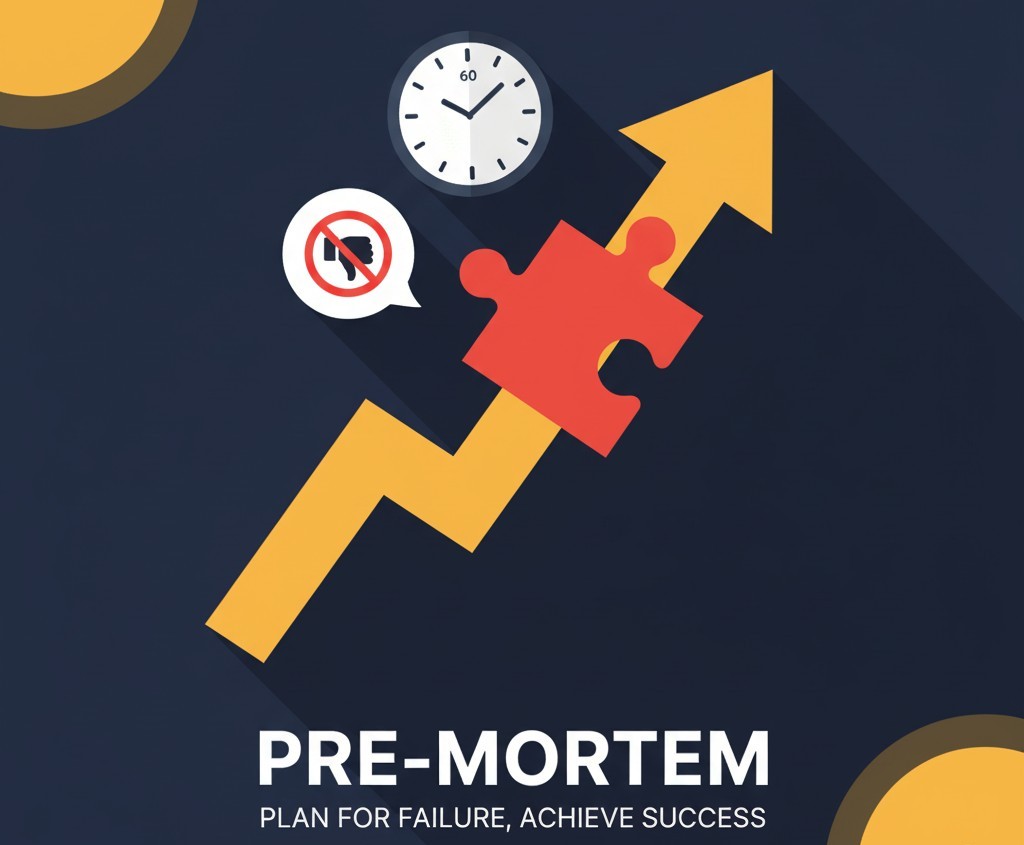
The pre-mortem is a fast, powerful team exercise that flips traditional planning on its head and helps you pressure-test your next project. By imagining failure, you can build a stronger foundation for success.
Here’s the 60-minute guide:
1. Set the Scene (5 mins): Gather the team. Announce: "Imagine we are six months in the future. The project was a disaster." Make the failure a certainty.
2. Brainstorm Causes (20 mins): Ask everyone to independently write down every reason they can think of for why it failed. This encourages honest, unfiltered input and bypasses groupthink.
3. Share and Consolidate (20 mins): Go around the room, with each person sharing one reason (seeking cause, not blame) until all points are on a board. Group similar themes to identify the most critical vulnerabilities.
4. Plan to Mitigate (15 mins): For the top 3-5 risks, brainstorm specific actions you can take now to prevent them. Assign owners and timeframes to each action.
In just one hour, you've moved from hoping for the best to actively preparing for the worst, creating a far more resilient strategy along the way.

An ineffective organisational structure acts like quicksand, slowing every strategic move. To build a structure that accelerates performance, you must start from your strategic imperative: form follows function.
1. Define the Function: What is your core strategy? Identify the two to four critical, value-adding activities your structure must support.
2. Map the Flow: Detail the end-to-end process of delivering value. Where are the handoffs? These points are potential bottlenecks.
3. Establish Clear Ownership: Ensure every critical function has a single, accountable owner. Ambiguity breeds avoidance.
4. Optimise Communication: Design the structure to reduce silos. Shorten communication lines between interdependent functions (e.g. Sales and Operations).
5. Balance Power: Determine the optimal balance of centralisation (for standardisation) and decentralisation (for responsiveness/speed).
6. Right-Size Span of Control: Ensure managers have a manageable number of direct reports to enable effective oversight.
7. Stress Test for Agility: Does the proposed structure allow the organization to pivot quickly in response to market shifts? Design for adaptation, not just today's status quo.
A well-designed structure is an enabler, not a constraint. Get the function right, and shape the form to it.
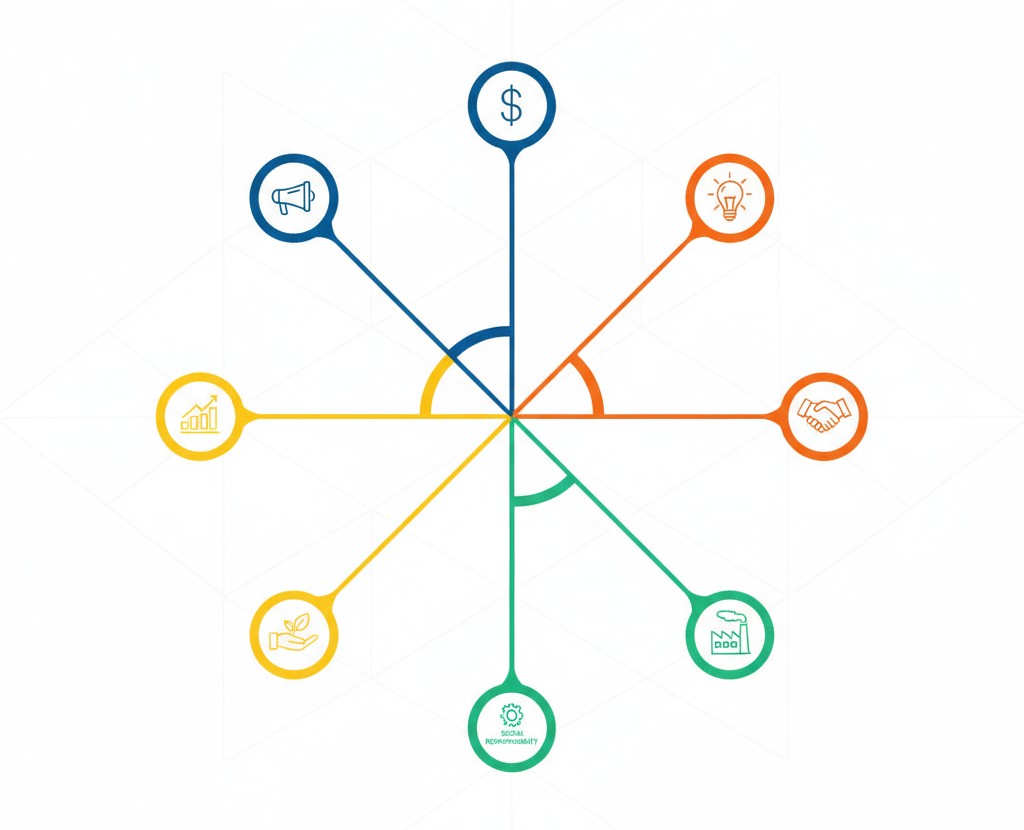
The search for the single strategic objective is a common executive tendency, but it's fundamentally flawed. No organisation functions on a single axis: senior executives have a 360-degree responsibility, and priority-setting must reflect that.
As management author Peter Drucker correctly observed, goals need to be set across the following eight key areas: Marketing, Innovation, Human Resources, Financial Resources, Physical Resources, Productivity, Social Responsibility, and Profit Requirements.
Executives must move past the simplicity of a singular focus and embrace the full complexity of their role. An organisation is a connected system: a lag in one area will inevitably impact other areas. We can’t expect to succeed if we skimp on vital areas and do less than half the job.
True organisational strength and credibility are based on a strategically cohesive set of goals … and that means ensuring coverage across all key dimensions of performance.

A real trap for Project Management Offices (PMO) is to inhabit a world of meticulous nomenclature and endless reporting requests, adding to a project team's burden rather than lifting it. They become a bureaucratic layer, inadvertently slowing down the very delivery they're meant to facilitate. When was the last time a PMO clearly articulated its own quantified value to the organisation?
The path to redemption for PMOs is clear: become problem-solvers and value-drivers. Instead of demanding status updates, offer solutions that genuinely accelerate delivery. This means providing shared tools that simplify reporting, proactively identifying and mediating cross-project conflicts, and porting across best practices between teams that properly empower them. By shifting their focus from policing to enabling, and demonstrating their impact in concrete terms – like reduced project costs or faster delivery – PMOs can become partners rather than perceived obstacles.
So, PMOs, if you’re listening, here is your challenge: streamline, coordinate, share best practices, demonstrate your worth … and ensure you minimise overhead rather than adding to it

Want your Delivery Roadmap to truly drive agile success? Keep it simple, visible, and focused on outcomes. First, ensure your roadmap prioritises initiatives based on value, not just effort. Challenge every item: "What problem does this solve? What impact will it have?" This forces strategic thinking and prevents feature bloat.
Next, make your roadmap highly visible and accessible to everyone. Display it prominently, digitally or physically, and reference it in daily or weekly stand-ups and stakeholder updates. This constant exposure reinforces direction. Finally, use the roadmap as a decision-making filter: if a new request doesn't align with a current roadmap theme or significantly alter strategic direction, it should be carefully reconsidered. This disciplined approach ensures focus and efficient execution, making your roadmap an active driver of agile delivery.

A strategy is only as good as its execution. That's why moving from concept to reality requires a clear Delivery Roadmap—a simple, visual guide that translates high-level strategy into tangible action and results.
A straightforward roadmap should focus on three key elements:
- Themes or Initiatives: These are the high-level strategic goals you're working toward (e.g. ‘Enhance Customer Experience’, ‘Achieve Operational Efficiency
- Key Features/Projects: The specific, observable deliverables or projects that support each theme (e.g. ‘Implement new CRM system’, ‘Streamline invoicing process’
- Target Dates: A time-bound (e.g. Q1, Q2, or specific month) delivery window for each feature or project.
Start with a small focus: don’t try to include every conceivable task for the next three years: just map the top three to five highest-impact initiatives for the next 12 months. This keeps the document manageable and maintains a clearline-of-sight between strategy and detail.
Do this with your roadmap, and you’ll give internal and external stakeholders the clarity and visibility they need to maintain confidence and cohesion.
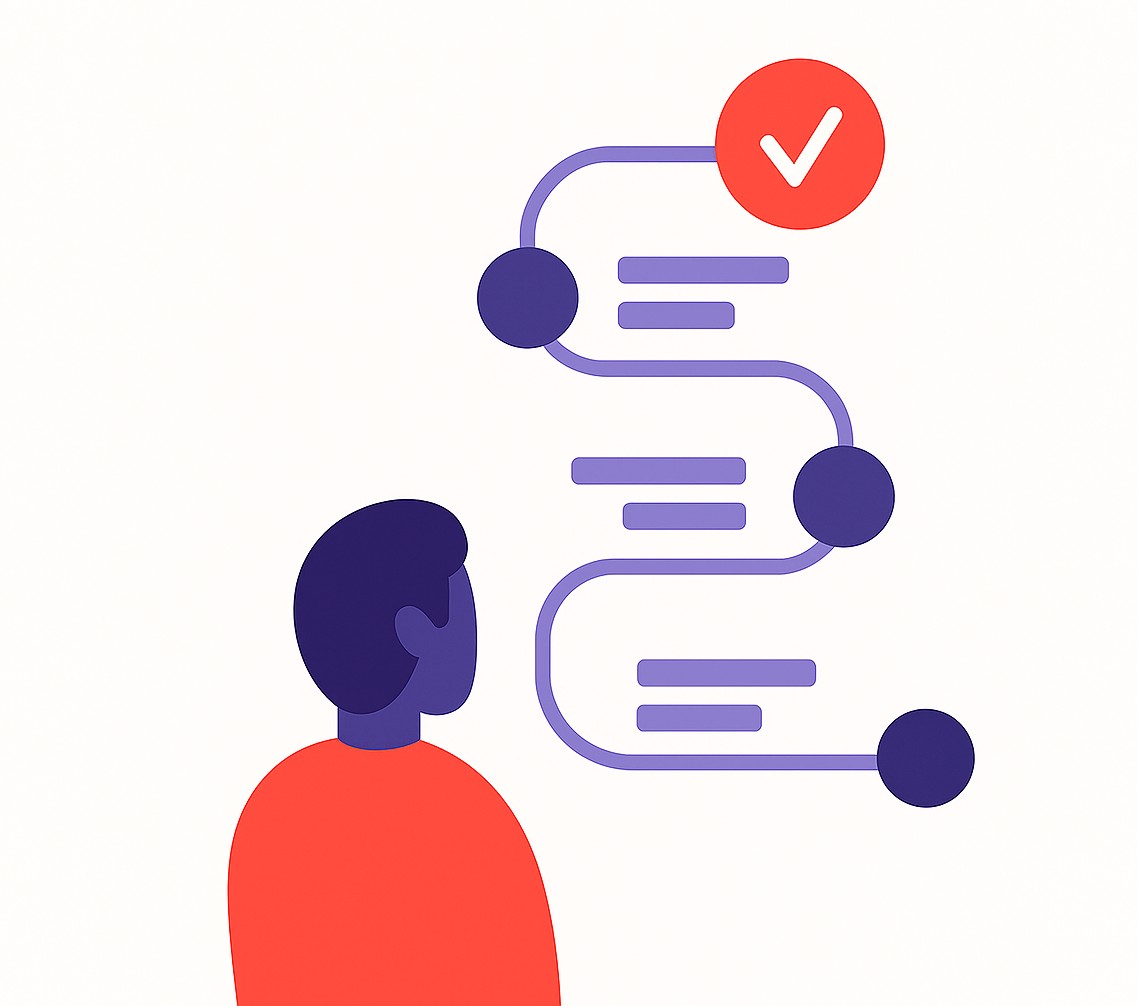
Ever feel like your project is a puzzle with missing pieces? The solution isn't another detailed plan, but a Delivery Roadmap.
This isn't a long-winded to-do list; it’s a high-level, visual guide that charts your strategic direction and major milestones. Think of it as your North Star, showing you the 'what' and the 'when', not the granular 'how'. It's the big picture, a living document that keeps everyone on the same page.
A robust roadmap brings clarity and focus. It acts as a single source of truth for all stakeholders, cutting through confusion and aligning teams toward a common goal. This shared understanding is vital for navigating the inevitable twists and turns of any project.
By focusing on outcomes and major milestones, a roadmap ensures that efforts contribute directly to the overall strategy. It's the secret weapon for managing complexity and delivering value.

Large, complex projects face a minefield of challenges: scope creep, budget overruns, and a lack of clear direction. The key to successful project delivery isn't just about meticulous planning, but also about providing a clear line of sight from intended outcomes to on-the-ground implementation.
Joining up the big picture (on one hand) with the day-to-day (on the other) requires robust mechanisms being in place: delivery roadmaps, project plans, transition plans, and stakeholder engagement frameworks … with relentless follow-up to ensure all these are being actioned, and responsible parties held accountable for results.
Combining higher-order strategic insight with a focus on detail at the coalface creates a cohesive package underpinned by solid governance. This structured, holistic methodology helps achieve greater assurance in project delivery, smoother transitions, and greater ‘sign-on’ from participants.

Effective governance is the bedrock of high-performing agencies. It’s not just about ticking boxes, but also about establishing clear frameworks, ensuring compliance, and continuously evaluating program effectiveness to deliver genuine value. Strong governance, coupled with rigorous performance monitoring, is vital for accountability, robust risk management, and achieving long-term outcomes.
Agencies face complex challenges that demand transparency and efficiency. Embedding solid governance practices ensures every initiative, from policy development to service delivery, is guided by clear objectives and responsible oversight. This allows us to identify and mitigate risks early, optimise resource allocation, and foster a culture of accountability.
Ultimately, governance is a commitment to continuous improvement. By consistently monitoring performance against established benchmarks, we can adapt, innovate, and ensure that our organisations are not just meeting current needs but are also prepared for future demands, driving sustained value in the process.

In today's complex and increasingly volatile landscape, risk is an ever-present factor. From market fluctuations to geopolitical uncertainty and operational disruptions, organisations face a myriad of potential challenges that can derail even the most carefully planned initiatives.
Traditional risk assessment relies on historical data and qualitative judgment, which, while useful, can fall short in anticipating unprecedented events or understanding dynamic interdependencies.
This is where analytics and simulation-based approaches prove to be transformative risk management instruments. By leveraging sophisticated models and computational techniques, organisations can move beyond simple forecasting to create dynamic" what-if" scenarios. Monte Carlo simulations, for instance, allow organisations to model thousands of potential outcomes based on varying inputs and probabilities, providing a comprehensive view of potential risks and their likelihood.
These tools assist organisations to identify vulnerabilities, quantify potential losses, and evaluate the effectiveness of different mitigation strategies. Whether assessing supply chain fragility, pricing volatility, or project timelines, analytics and simulation offer deeper insights, leading to more informed decision-making and a more resilient operational framework.
Embracing these advanced techniques is no longer just an advantage – it’s a necessity for robust and forward-looking risk management.
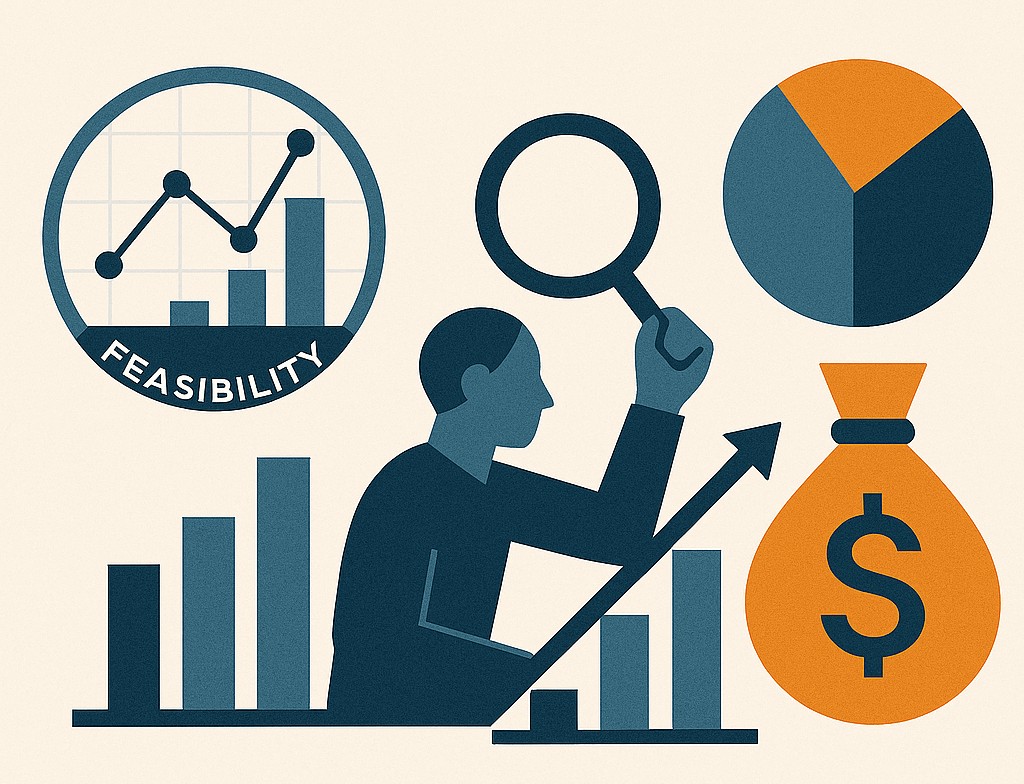
Every significant initiative, whether a major infrastructure project or a transformative policy change, begins as an idea. But how do we bridge the gap between a compelling concept and a funded reality? The answer lies in rigorous, data-driven analysis.
Securing stakeholder buy-in and substantial funding requires more than just a powerful vision. Decision-makers, investors, and funders demand a clear, defensible business case. This is where robust economic and financial analysis becomes indispensable. Methodologies like Cost-Benefit Analysis (CBA) provide the evidence needed to quantify value, assess viability, and forecast tangible outcomes. They move the conversation from "we think" to "we can demonstrate."
For private enterprises, this analysis underpins sound capital investment. For government agencies, it's the cornerstone of responsible public resource allocation, ensuring taxpayer funds generate the greatest community benefit. A well-constructed analytical framework not only justifies the initial outlay but also provides a roadmap for measuring success.
Ultimately, solid analytics is not just a compliance hurdle; it is the strategic foundation that transforms ambitious proposals into successful, impactful realities, providing the confidence needed to invest wisely

A robust Social Impact Assessment (SIA) is crucial for ensuring major projects deliver real benefits to communities while minimising negative consequences. Drawing from the NSW Government's SIA Guideline, here are four key ingredients for an effective assessment:
1. Early and Meaningful Engagement: Go beyond tokenistic consultation. Engage with all stakeholders, especially the most vulnerable and directly impacted groups, from the very beginning. This builds trust and ensures the SIA addresses the issues that truly matter to the community
2. A Strong Evidence Base: A credible SIA is built on a solid foundation of both qualitative and quantitative data. This includes demographic statistics, but also local stories, cultural values, and community aspirations. A thorough understanding of the existing social fabric is essential to accurately predict potential impacts
3. A Focus on Mitigation and Enhancement: The goal of an SIA isn't just to identify problems, but to find solutions. This means developing practical, tangible, and enduring measures to mitigate negative impacts and, just as importantly, to enhance the positive benefits a project can bring.
4. Adaptive Management: A good SIA is a living document. The process shouldn't stop once the report is submitted: ongoing monitoring and adaptive management are critical to ensure that mitigation measures are working as intended and to address any unforeseen impacts that may arise.

Here are four essentials to make your cost-benefit analysis (CBA) as solid and robust as possible:
1. A Clear "Do-Nothing" Baseline A CBA should always include a "do-nothing" or "business-as-usual" scenario. This allows you to evaluate only the incremental costs and benefits of the proposed project, ensuring your analysis isn't skewed by changes that would have occurred anyway.
2. Document assumptions transparently Outline every rate, price and behavioural assumption in the appendix. Make your discount rate and inflation forecast explicit so readers can trace your logic—and challenge it where needed.
3. Balance quantitative and qualitative factors Pair hard metrics (NPV, ROI) with qualitative benefits like stakeholder trust or social impact. A well-rounded CBA acknowledges benefits that defy precise dollar values but still move the needle.
4. Include Sensitivity and Risk Analysis Incorporate sensitivity analysis to test how the outcome change sunder different assumptions. By stress-testing key variables, you’re not only gauging the resilience of your findings, you’re also identifying potential risks.

I took this gem of a pic on a recent trip to outback New South Wales (Silverton, population: 50).
It may not have the sixteen decimal place precision of Motorola’s Six Sigma approach to quality, or represent the end-to-end systemic flow of Toyota’s Lean Production System … but as a process control you can’t argue with its brevity and clarity of communication.
Risk management.
Process control.
The Australian way.

Here are three key ingredients for an effective program review, designed to help generate meaningful insights and drive continuous improvement.
1. Defined Objectives and Measurable Indicators Before you can determine if a program is working, you must first know what success looks like. An effective review begins with a clearly defined evaluation framework: this serves as the foundation of the review, providing a clear set of benchmarks against which to measure performance … at the start of the review process. Without this, you risk a review process that is subjective, and lacks credibility and ‘bite’ on account of the potential for shifting goalposts.
2. Stakeholder Involvement A program's success is a collaborative effort, so an effective review must engage a broad range of stakeholders. This includes clients, partners, and senior management. By gathering diverse perspectives through surveys, interviews, and focus groups, you can gain a holistic understanding of the program’s strengths and weaknesses. This inclusive approach not only enriches your data but also fosters a sense of shared ownership and support for any changes that may arise from the review.
3. Actionable Insights and Continuous Improvement A program review is not an end in itself; it is a catalyst for improvement. The most crucial ingredient is the ability to translate findings into a clear and actionable improvement plan. A good review will not just identify problems, it will propose solutions. The review should culminate in a documented plan outlining specific strategies, responsibilities, and timelines for implementing changes. This creates a cycle of continuous improvement, ensuring that the review process leads to tangible enhancements in program design, delivery, and outcomes.
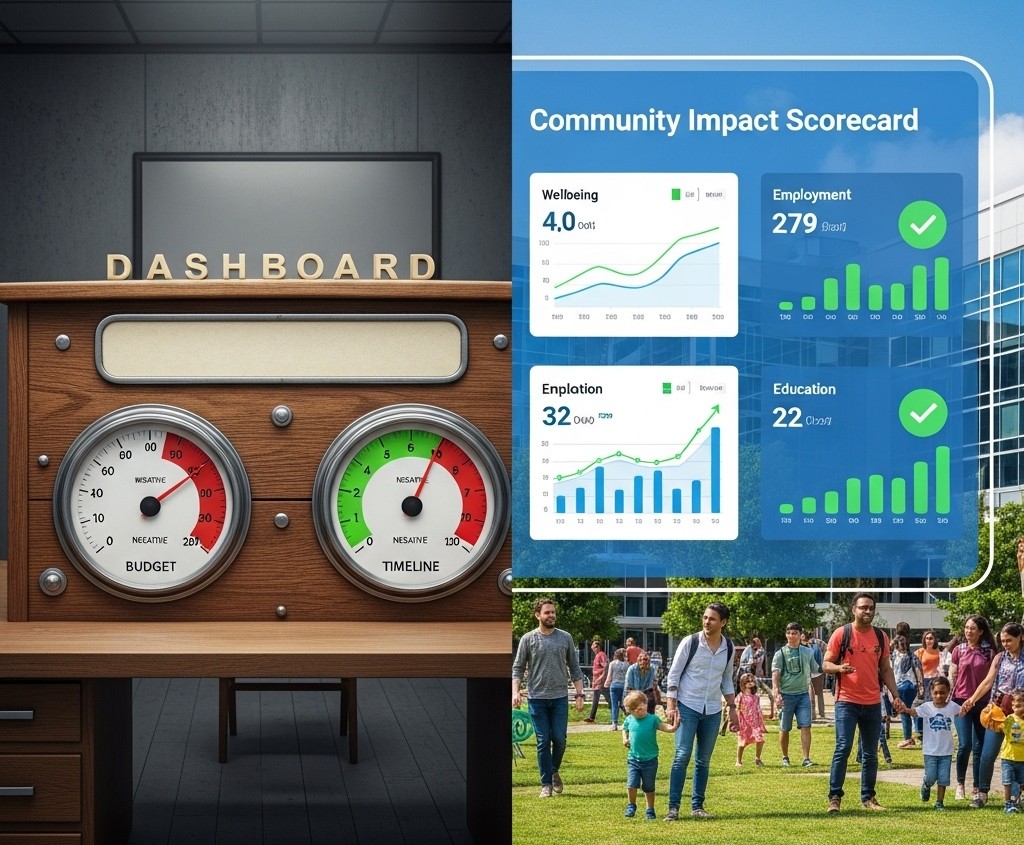
When delivering a program on the scale of Building Homes for NSW, metrics on time, cost and number of dwellings built – while essential – only tell part of the story. A program designed to change lives should be measured by its impact on lives.
Forward-thinking housing authorities are developing sophisticated performance scorecards that balance financial and delivery metrics with key social outcomes. This includes tracking tenant stability, improvements in education and employment, reduced interaction with the justice system, and healthcare cost avoidance. Implementing such a framework not only provides a richer narrative of success but also enables active performance management, allowing agencies to direct resources to the models and partners who are delivering the greatest public good.

You can't build a community with a construction contract. Partnerships are key.
Delivering thousands of new homes will require deep collaboration with the private and not-for-profit sectors. However, traditional, transactional procurement models often fall short. They can stifle innovation, create adversarial relationships, and fail to capture the holistic value offered by community providers, developers, and support services.
A truly effective multi-billion dollar program requires a strategic approach to market engagement. This involves co-designing delivery models that blend finance, construction, and tenancy management expertise. By establishing long-term partnerships based on shared risk, shared outcomes, and clear performance indicators, greater value can be unlocked, innovation in design and tenancy support can be fostered, and assets delivered ensuring benefits for tenants and the state for decades to come.

A $6 billion investment program needs more than a $6 billion budget: it needs a delivery-focused organisation.
Receiving a multi-billion-dollar funding allocation is a huge vote of confidence, but it immediately places immense pressure on an organisation's existing structures, processes, and culture. The capabilities required to manage a steady-state portfolio are fundamentally different from those required to deliver a massive, fast-paced capital works program under intense public and political scrutiny.
Now is the time for leaders to ask critical questions:
· Is our governance agile enough to make timely decisions and manage risk effectively?
· Do we have the commercial acumen to secure the best value from the market?
· Are our teams empowered and our systems robust enough to handle the surge in activity?
Proactively addressing these operating model challenges is a vital investment for ensuring the program delivers on its promise.
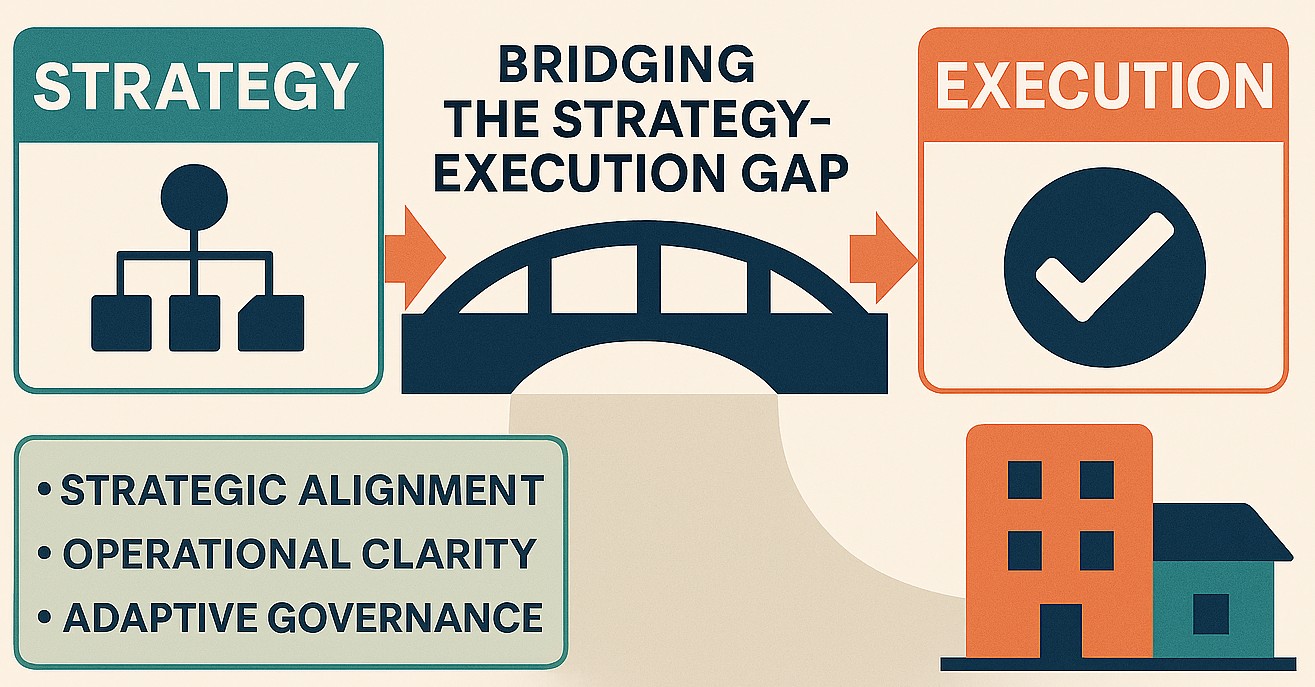
Governments are rightly investing billions into social housing, but translating policy into tangible outcomes—homes built, lives improved—is where the real complexity lies.
Strategy, while vital, needs to be joined at the hip with implementation. Delivery typically struggles with long lead times, multiple processes and legacy systems … and maintaining that most essential ingredient: momentum.
Structured alignment is required to materialise the good intentions. Delivery roadmaps that cascade strategic goals into operational milestones, adaptive governance that responds to on-the-ground realities, and performance frameworks that track each of inputs, outputs and outcomes (and the links between all three) help ensure that housing programs deliver what they promise.
As public housing programs scale, the ability to execute with precision and agility becomes a strategic asset: delivery is a core capability.
Bridging the gap between vision and reality is the perennial challenge … and meeting it is what fulfils the promise.

Is it that the machines are getting smarter … or that people are getting dumber?
(Yes America: I’m looking at you).
We’re worried that the machines might become self-aware.
Are we completely sure that, umm, people are self-aware?
Oh, and Yes: the accompanying picture was generated by a machine.

The key to wrangling a project, to making it tractable, is to ensure you can get your head around the length and breadth of it. Here are three aids to doing that:
- Ensure there is a place to park new or unresolved issues – such as a Parking Bay or Issues Log – to ensure these don’t get lost before they find a home. And then make sure you have a mechanism, such as a regular project or working group meeting, to review and allocate them, and track their resolution
- Ensure there is a specific means of identifying, capturing and managing risks. This should sit across the project plan so that factors which might hinder the accomplishment of project milestones are flagged, with sufficient time for them to be addressed
- Communicate … even when there is no change. An absence of communication is not the same as a communication of ‘no change’ or ‘no progress’. It’s still important for people to hear ‘Nothing to report’ if that is the accurate project status update. Ensure a constant flow of communication up, down and across all participants and stakeholders … and don’t confuse a message of ‘No change’ … with no message.

Although tangled and messy, the Redback Spider’s web functions in three dimensions rather than the two dimensions of the typical spider web.
Does your organisation’s or division’s strategy operate in two dimensions, or three? Are there mutually reinforcing facets: think of the way Walt Disney’s TV appearances in the 1950s fed awareness of and interest in the newly built Disneyland, which in turn prolonged and reinforced Disney characters and films. Or do they only operate only on a single plane? Are your operational and risk management systems multi-faceted enough to function three-dimensionally or are they merely ‘flat-file’?
Next time you see a spider web, let it prompt you (as you're reaching for the pest spray) to think about the depth and breadth of your strategy.

I’ve had clients ask me how to transmit a vision through the organisation: how do you establish a clear line of sight from high-level mission through to implementation and execution?
The truth is: there is no secret to this, no arcane management methodology is required. There is only:
- collaborative clarity
- a structure by which to hold people accountable for results and timeframes, and
- relentless follow-up.
That’s pretty much it.

- The ℎ𝑜𝑙𝑑𝑖𝑛𝑔 𝑟𝑒𝑝𝑙𝑦 – a valuable means – in the age of digital communication – of letting people know you’ve received their email or voice message … but don’t have the time to properly respond just yet
- The 𝑚𝑒𝑒𝑡𝑖𝑛𝑔 𝑎𝑔𝑒𝑛𝑑𝑎 – an agenda sent out to participants in advance of a meeting is (along with the work that happens between meetings) likely the key success factor of any meeting
- The 𝑖𝑠𝑠𝑢𝑒𝑠 𝑙𝑜𝑔 – for capturing and holding important issues that require resolution … without having to detour from immediate priorities
- The 𝑟𝑖𝑠𝑘 𝑟𝑒𝑔𝑖𝑠𝑡𝑒𝑟 – not just for review at Board Risk Committees, but also a vital input to regular management deliberation … and strategy development efforts (in particular the Threats section of a SWOT analysis)

Here are my top four change management tips, culled from the literature and validated by years of work in the field:
- Focus on real business problems (reducing operating costs, improving customer response times) rather than abstractions (‘participation’)
- The single biggest cause of failure of any change effort is absence of senior management support
- People support what they help to create
- People don’t resist change; they resist ambiguity

Need to garner support for a corporate initiative? Here are my top three tips on how to do it.
- Crystallise the benefits of your initiative for the major players: the key here is to make the benefits *tangible* (as distinct from *large*)
- Meet the players face-to-face: get in front of them and give them a chance to have their say (and outline the benefits for them – see point above). There’s something compelling about being face-to-face with people which is not as strong with other forms of communication
- Create a bandwagon that has such momentum that it’s a no-brainer that people would get behind it. Senior leaders have to bang the drum for an initiative loudly and constantly, publicising exemplars and providing plaudits for early followers: be loud and proud.

- ‘The best predictor of the success of a meeting may be a written agenda distributed in advance’ (Romano & Nunamaker) … even a regular weekly stand-up meeting should have an agenda.
- In a meeting, follow the thread of the conversation, and if it gets off track, bring it back on course.
- If there are important issues which need attention, but risk derailing other items, put them on a parking bay and assign them to someone to progress and report back at a future meeting.
- Debussy said ‘Music is the space between the notes’; the value of a meeting depends on what happens between meetings (follow-up, implementation). Meetings are to share information, coordinate players, make decisions and track results: they are to progress action, not avoid it.

The ancient Roman army was so well organised that it had to be attacked three times before it was defeated.
The Romans’ battle formations were such that if the tightly packed vanguard were driven back, it would interlock with the second line of defence to create a larger body which provided a fresh onslaught. If that unit in turn were repelled, the rear guard would receive that unit as a whole: all three units then combined to create a single body to re-enter the battle.
The Romans were able to successively regroup in battle and had to be beaten three times before they were properly defeated; with this ability facilitated by progressively looser configurations.
The punchline: risk management systems should allow for multiple challenges, and successive mitigations should become progressively more flexible.

The first type of change metric is for the change effort itself; typical metrics here include:
- frequency of communication
- percentage of business units with change champions embedded
- actual versus scheduled timeline for change project.
The second is for business-as-usual KPIs which reflect a demonstrable difference in results as a result of the change effort. Examples might include:
- unit costs
- customer satisfaction
- defect rates.
The two types are shown in the graphic, using a change effort aimed at reducing average costs as an example.

- The title or subject should encapsulate the issue being addressed. Be on point, not oblique
- Crystallise the key points so the issues are succinctly spelt out on the cover sheet, and the reader/approver can ‘get’ the issue within a minute or two
- Use the logic of the briefing note structure (Issue, Background, Current Position, Recommendation, or similar) to take the approver on a ‘journey’ that guides them where you need them to be
- Don’t ramble. Apply Occam’s Razor
- Include an action which lets the approver know what they need to do. If the purpose is to inform them, then the recommendation is ‘For information’
- Relegate large sources or technical material to an appendix. The cover sheet should stand on its own and reference any appendices.

Many organisations have to comply with requirements imposed on them by a central office. There may be mandatory strategy sessions, or plans that have to be submitted.
These are typically seen as burdens to be completed as painlessly as possible to get ‘corporate off our back’. But there are more strategic ways of viewing them. Fulsomely meeting the requirements of a parent organisation is an opportunity to demonstrate competence, and gain favour with a stakeholder who can make funding available or open doors.
Your contribution may also shape central office’s agenda: if you have to prepare risk management plans you can use your plan to shape the conglomerate’s approach to risk.
Rather than complaining about the inevitable, why not leverage it?

- Analyse web-captured free text customer feedback to source good news stories and identify areas of risk or dissatisfaction
- Analyse KPI results to determine which KPIs drive others, and which are lead indicators; use this to go behind traffic light indicators to unpack the *drivers* of performance
- Benchmark offices or service outlets against each other to find best/worst performers; use this as a prompt to find the sources of high performance
- Derive regional or area structure based on spatial distribution of clients
- Derive whole-of-life cost estimates for hard assets/infrastructure. Model the impact on asset condition of various maintenance regimes over the expected life of the asset
- Check for irregularities to supplement exception reporting and assure probity of accounts payable processes for internal audit, Auditor-General etc.

- Analytics techniques can be used to 𝑠𝑖𝑚𝑢𝑙𝑎𝑡𝑒 𝑎𝑛𝑑 𝑝𝑟𝑒𝑑𝑖𝑐𝑡 𝑡ℎ𝑒 𝑟𝑎𝑛𝑔𝑒 𝑜𝑓 𝑝𝑜𝑠𝑠𝑖𝑏𝑙𝑒 𝑜𝑢𝑡𝑐𝑜𝑚𝑒𝑠 𝑓𝑜𝑟 𝑝𝑟𝑜𝑝𝑒𝑟𝑡𝑦 𝑑𝑒𝑣𝑒𝑙𝑜𝑝𝑚𝑒𝑛𝑡𝑠 𝑜𝑟 𝑙𝑎𝑛𝑑 𝑟𝑒𝑐𝑙𝑎𝑚𝑎𝑡𝑖𝑜𝑛 𝑒𝑓𝑓𝑜𝑟𝑡𝑠
- Asset and facility managers can use analytics to model maintenance expenditure to 𝑠𝑡𝑟𝑖𝑘𝑒 𝑡ℎ𝑒 𝑏𝑒𝑠𝑡 𝑏𝑎𝑙𝑎𝑛𝑐𝑒 𝑜𝑓 𝑚𝑎𝑖𝑛𝑡𝑒𝑛𝑎𝑛𝑐𝑒 𝑐𝑜𝑠𝑡 𝑣𝑖𝑠-à-𝑣𝑖𝑠 𝑎𝑠𝑠𝑒𝑡 𝑐𝑜𝑛𝑑𝑖𝑡𝑖𝑜𝑛 𝑜𝑣𝑒𝑟 𝑡𝑖𝑚𝑒
- Where large-scaled, detailed data for a given property market is available, analytics can be used to sift through the array of property attributes to potentially 𝑖𝑑𝑒𝑛𝑡𝑖𝑓𝑦 𝑢𝑛𝑑𝑒𝑟-𝑣𝑎𝑙𝑢𝑒𝑑 𝑝𝑟𝑜𝑝𝑒𝑟𝑡𝑖𝑒𝑠
- For owners with multiple holdings, analytics can be used to help 𝑚𝑎𝑘𝑒 ‘𝑠𝑒𝑙𝑙-𝑣𝑒𝑟𝑠𝑢𝑠-𝑟𝑒𝑡𝑎𝑖𝑛’ 𝑑𝑒𝑐𝑖𝑠𝑖𝑜𝑛𝑠
- Analytics techniques can be used to 𝑠𝑒𝑔𝑚𝑒𝑛𝑡 𝑏𝑢𝑦𝑒𝑟 𝑚𝑎𝑟𝑘𝑒𝑡𝑠 to break them down into discrete groups 𝑡𝑜 𝑤ℎ𝑖𝑐ℎ 𝑡𝑎𝑟𝑔𝑒𝑡𝑒𝑑 𝑎𝑝𝑝𝑟𝑜𝑎𝑐ℎ𝑒𝑠 𝑐𝑎𝑛 𝑏𝑒 𝑚𝑎𝑑𝑒 𝑏𝑦 𝑣𝑒𝑛𝑑𝑜𝑟𝑠 𝑜𝑟 𝑡ℎ𝑒𝑖𝑟 𝑎𝑔𝑒𝑛𝑡𝑠.

This is the first in a series of Strategy Snippets® to help managers deal with risk and uncertainty. Decision trees are based on a left-to-right branching logic in which a sequence of chance events are articulated and ‘unfold’ into a range of possible outcomes.
The attached graphic shows a hypothetical decision tree for a construction company deciding whether to proceed with a particular project, with all combinations of possible outcomes. Each has its own ‘pathway’; options for action by management (recruit more staff? defer marketing? etc.) could also be added, so that the decision tree captures both events outside the organisation’s control, and those within it.
Even a simple decision tree like the one shown can help give management a clear pathway forward in an uncertain environment.

Many managers overlook the foundation when setting goals and priorities: taking stock of previous 𝘱𝘦𝘳𝘧𝘰𝘳𝘮𝘢𝘯𝘤𝘦; specifically, how performance 𝘤𝘰𝘮𝘱𝘢𝘳𝘦𝘥 𝘵𝘰 𝘭𝘢𝘴𝘵 𝘺𝘦𝘢𝘳’𝘴 𝘨𝘰𝘢𝘭𝘴.
This oversight means you don’t gain insight into your ability to produce results, or what has and has not worked for the organisation, and why ... all of which are critical to managing risk.
Knowing strengths and weaknesses is critical to responding to a changing environment … and a review of past performance highlights those strengths and weaknesses.
The attached graphic, with a worked hypothetical example, uses a template you can adapt for your own review.
So: revisit last year’s goals, and how you performed against them. Then do a strategic scan of your environment. 𝘛𝘩𝘦𝘯 set your goals and do your risk management planning for this year.

There is so much uncertainty in management and business: what will happen to prices, take-up rates, or funding? Typically such uncertainty is dealt with via sensitivity analyses, but so often there are multiple variables with multiple uncertainties!
Computer simulations are a powerful means of dealing with this: all the different possibilities can be input to one big mash-up. The computer can then generate thousands of scenarios using random generated numbers, providing a full spectrum of results … and 𝘩𝘰𝘸 𝘭𝘪𝘬𝘦𝘭𝘺 each is to eventuate.
This form of analysis, known as Monte Carlo simulation (because of the use of random numbers, as at a casino) is a powerful, but under-utilised, risk management technique.

Small-scale pilots and business experiments are great ways to collect information, iron out bugs and manage down risks
My three key observations on pilots and tests are these…
- Pilots and tests are easier to implement than most people think, and are massively under-utilised
- They are best used in operational and tactical contexts: it is generally not feasible to test a major change in strategic direction or a merger or acquisition ahead of time
- When running a pilot or test, always ensure that the results can be compared to a pre-defined baseline or control group.

